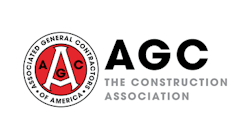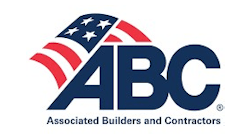Excessive exposure to noise is one of the most pervasive occupational health hazards on a construction site. A study conducted by the University of Washington indicated that, depending on the job task, as many as 10% of construction workers may be exposed to noise levels at or above the current federal OSHA permissible noise exposure limit (PEL) of 90 decibels (dBA).
“The OSHA standard is over 35 years old,” says Don Garvey, CIH, CSP a technical service specialist with 3M Company in St. Paul, MN. “Both the American Conference of Governmental Industrial Hygienists (ACGIH), a professional association for industrial hygienists and the National Institute for Occupational Safety and Health (NIOSH), the occupational safety research branch of the federal government, currently recommend an exposure limit of 85 dBA.” Because decibels is a logarithmic scale (similar to that of the earthquake Richter Scale) 85 dBA is actually about half of 90 dBA. Using an exposure limit of 85 dBA means significantly more workers would be considered overexposed to noise than the above data indicates.
Sound level meters and noise dosimeters are used to determine workers exposure to noise. If levels are found to be excessive, contractors must take action to reduce the exposure. The best solution, and the one that OSHA requires be used if feasible, is engineering controls-using technology to reduce or eliminate exposure. Examples include mufflers on pavement breakers, or acoustical insulation on the interior of vehicle cabs.
If construction noise exposures can not be controlled below 90 dBA, OSHA in 29CFR 1926.52 requires contractors to implement an effective hearing conservation program. However, OSHA has never defined exactly what such a program for construction entails. “OSHA was expected to publish a proposed hearing conservation program for construction several years ago, but it never occurred,” says Garvey.
Some states, however, are moving ahead on their own to protect construction workers from excessive noise. In Washington State for example, the PEL for noise is 85 dBA. As noted above, this is essentially half the federal PEL. In addition, construction workers who are exposed to noise levels above the PEL must be placed in a hearing conservation program that includes implementing feasible engineering controls for exposures above 90 dBA, availability and use of hearing protective devices (HPD) such as ear plugs or ear muffs for workers with exposures greater than 85 dBA, worker training, and audiometric testing.For workers who will be on the job less than one year, a typical situation for many construction workers, the contractor may instead implement a hearing conservation audit program. Along with other provisions, the audit requires regular determination of worker noise exposure, verification that HPD are adequate and being properly worn, and interviews with the workers to address any questions or concerns regarding noise exposure. The reader should refer to Washington Administrative Code 296-817 for complete details.
Because use of HPD is frequently the method of control used on construction sites, worker training is critical to help ensure it is properly used when needed. NIOSH conducted a study of noise and hearing protection among construction carpenters. Fully 100% of those interviewed knew that excessive noise was dangerous to their hearing. Ninety percent thought that noise was affecting their hearing. But only 17% of the workers regularly used HPD. “Training has gotten across the point that noise is bad for your hearing,” says Garvey. “Now training needs to be focused better on getting workers to use hearing
protection.”
Research at the University of Michigan indicated that approximately 50% of the variability between users and nonusers of hearing protection in the construction industry can be accounted for by five variables:
- Control of health-perception of one’s ability to maintain personal health
- Self-efficacy-confidence in ability to use HPD
- Benefits-expected positive effects of using HPD
- Barriers-negative aspects of using HPD
- Value of use-perceived importance in outcome of using HPD
By addressing these issues during training-that hearing loss is not “part of the job” and can be protected, that protecting your hearing allows a better quality of life for the worker and also for the worker’s family, that wearing HPD does not mean you are not a tough guy-some of the reluctance to wear hearing protection may be overcome.
Being aware of cultural differences in the construction work force may also help improve the effectiveness of training. Some cultures believe that events are preordained and destined to happen. Training can emphasize that, by taking the proper precautions, hearing loss as well as other accidents and illnesses can be prevented. In other cultures, asking a superior a question or to repeat something can be difficult for fear of implying that the superior did not do a good job in explaining the task.
Workers may feel very uncomfortable asking a question and putting a superior in what they see as a potentially embarrassing situation. Knowing that, the trainer can adapt his or her training methods to accommodate these cultural communication styles. Instead of asking workers if they understand how to insert an earplug properly, the trainer can ask them to demonstrate the procedure. That allows the trainer to verify that the worker knows the procedure, but avoids possibly putting the worker in an uncomfortable cultural position. In this same vein, it is important that training emphasize that is it not only acceptable but also encouraged to ask questions when something is not understood.
Finally, in many cultures, age is an important factor. Elders can carry great authority. Involving elder workers in health and safety procedures, such as use of hearing protectors, can provide the influence to convince younger workers of the importance of following good safety and health procedures.Another thing that construction safety managers should be aware of is overprotection. Most of the noise exposure in construction is at or below 95 dBA. Therefore, an HPD need deliver a reduction of only about 10 dB to adequately protect most workers. One of the biggest complaints regarding hearing protection is that it can limit the ability of a worker to hear verbal communications from fellow workers. Health and safety managers should be aware that the HPD with the highest noise reduction rating (NRR) is not always the best choice for their application. Several protectors-both muffs and plugs-that provide adequate, but not necessarily the highest noise reduction, should be available for the workers to choose from. Worker comfort and acceptability should also be considered when selecting hearing protection for a specific work environment.
Noise exposure on construction sites can be a challenge for safety personnel and workers alike. However, with proper exposure measurements, use of engineering controls or HPD when needed and effective worker training, noise can be safely controlled on work sites.








